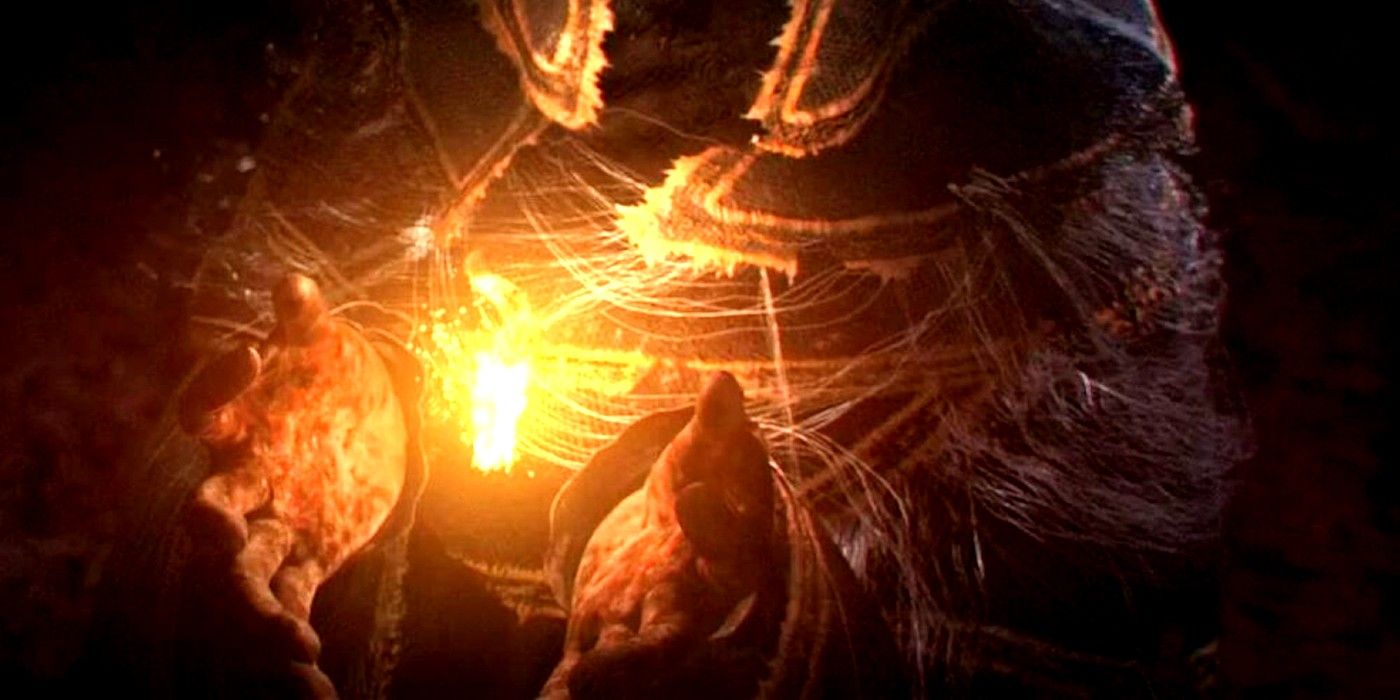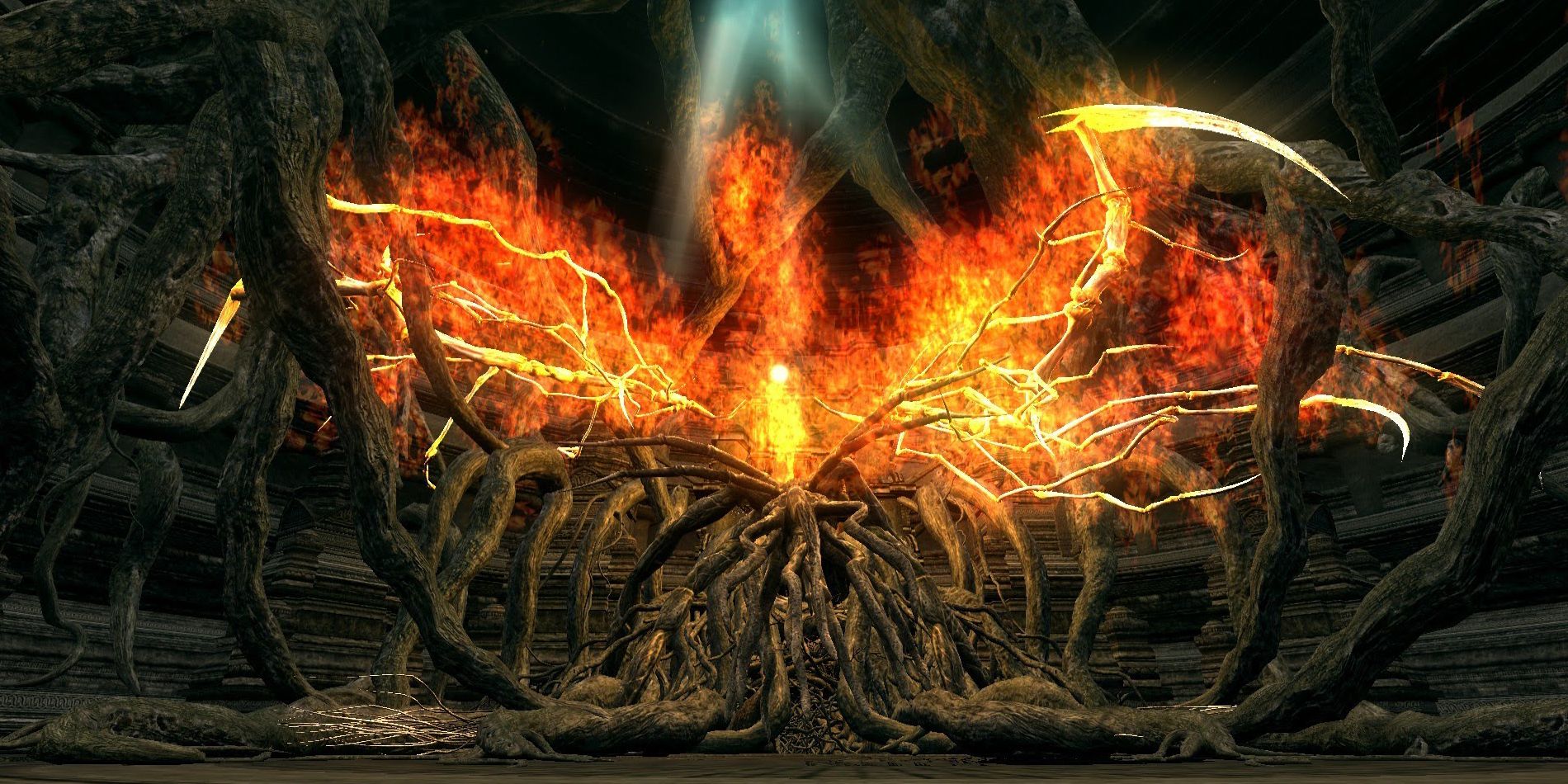Dark Souls games are known for their impenetrable qualities. Whether it be the lore, the punishing difficulty or the many hidden mechanics, Dark Souls games seem to try their hardest at bewildering the player at every turn. Naturally, this approach does not end at pyromancy, the black sheep of the Dark Souls magic trifecta, which intersects with both lore and gameplay in unique ways.
As one would expect from a fantasy RPG, Dark Souls has much more to it than swords and boards. From the series' first entry, players are offered three options for magical combat: sorcery, miracles, and pyromancy. For the most part, all three share many similarities. Each has their own kind of catalyst with which to cast spells. These catalysts can be upgraded, and players must level their attunement stat in Dark Souls to properly equip a given spell before casting it. Once cast, each type of magic in Dark Souls has its own associated type of damage. However, pyromancy strays from its brothers in several ways functionally, and has its own unique lore which justifies this abnormality.
Unlike the other forms of magic in the Dark Souls universe, the damage done by pyromancy originally had no associated stat which it scaled to. While sorceries scale with intelligence and miracles scale with faith, pyromancy damage scales exclusively with the level of the player's equipped catalyst. Later games, like Dark Souls 3, would change this by making pyromancy damage scale evenly with both intelligence and faith. These design decisions may seem random, but the cause behind them actually has roots in the game's lore and the origins of pyromancy.
The Hidden Lore Behind Dark Souls' Pyromancy
In Dark Souls lore, pyromancy's roots begin with the Witch of Izalith and her followers, the Daughters of Chaos. The Witch of Izalith was one of the original pygmies to be granted a lord soul by the First Flame, and her mastery over fire sorceries (the predecessor to pyromancy) was one of the key elements to the gods' victory over the Dragons. When the First Flame finally began to die, it was the Witch who used her sorcery to attempt to create a new "First Flame" from her lord soul. This went horribly awry as she lost control over her own soul, causing it to become overgrown and transform her into the Bed of Chaos. At the same time, this chaos served as an unchecked source of life, creating the demons players encounter through the entire series. Later, Daughters of Chaos such as Quelana expanded on the art of flame sorceries to create pyromancy as it appears in the Dark Souls games.
This sequence of events is incredibly important because, in addition to explaining the origins of both pyromancy and demons, it establishes a few key rules about the Dark Souls universe. First, just as the First Flame is the soul of the living world, all lesser souls naturally manifest themselves as a fire. Furthermore, since the First Flame is the source of power for all gods, it's clear that all magics are simply various ways of manipulating souls. Finally, because the soul's natural state is that of fire, pyromancy is the most natural of all magics.
Pyromancy's relationship to nature is almost synonymous. Putting aside the fact that both sorcery and miracles manipulate souls through unnatural means (science and sheer willpower, respectively), pyromancy carries an extremely naturalistic philosophy with it. This is why pyromancy is not associated with any one stat, and why the pyromancy flames that act as catalysts are actually portions of a pyromancer's soul. It is a more approachable, balanced form of magic that derives power from the most natural, uncensored parts of their being. Pyromancers do not use scientific reason to control souls, nor do they enslave souls to their will through sheer faith. They "feel" out their art intuitively using a mixture of the two. Of course, as the Bed of Chaos Dark Souls boss demonstrates, this has its own drawbacks. Sorcery and miracles may be unnatural, but they are orderly. So, when a pyromancer loses that intuitive control over their fire, it becomes unbound and spreads destruction across the world of Dark Souls like a field of ivy.


